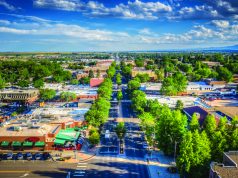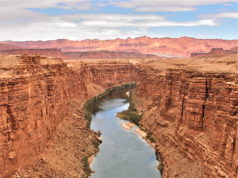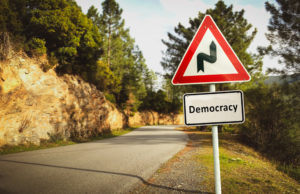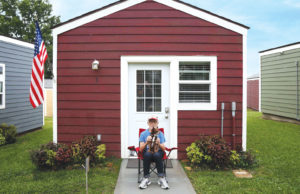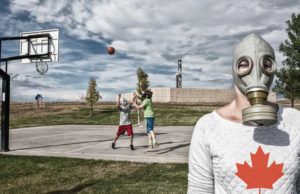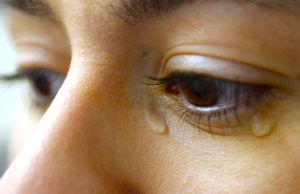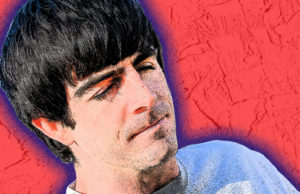has plenty of its own problems. Violent gangs. Drug traffickers. An
addiction to money sent from roughly a third of its population living
in
All of that, however, was overshadowed by other faraway trouble as President
Still, Obama completed here (after much delay and
out of view of the public) what could arguably have been the most
dramatic gesture of his swing through
Revered in much of the region, the cleric was slain in 1980 by death squads working for the side in
On the first visit by a U.S. president to Romero’s tomb, Obama was accompanied by Salvadoran President
Housed in a rather austere lower chamber of the
Metropolitan Cathedral, Romero’s tomb is a frequent shrine of prayer
and supplication for Salvadorans and other faithful from around the
world.
Obama appeared solemn and lighted a candle alongside the tomb, as did Funes, who paused and crossed himself.
Although many see Romero as a priest deserving of
sainthood, his enemies see him as a political figure and tool of the
left. His is a figure that in many ways encapsulates still-simmering
tensions of the civil war that ended by United Nations-brokered peace
accords 20 years ago.
There were no cheering crowds or religious
processions in the streets to greet Obama. Security was so tight that
the entire area around the cathedral was emptied of the usual cacophony
of street vendors and smoke-belching buses, replaced by hundreds of
police and army troops, four armored personnel carriers, sharpshooters
and sniffer dogs.
“How wonderful it is that
50, a clothes peddler who fought in the war and was one of several
hundred people kept blocks away from the cathedral but who still hoped
to catch a glimpse of the president.
“Msgr. Romero was never a communist. He was a man who died like a sheep among the wolves.”
In an interview with the Los Angeles Times shortly before Obama’s arrival in
“Msgr. Romero has transcended ideology and is the
nation’s spiritual guide,” said Funes, who has a portrait of the bishop
in his presidential office. Homage from as important a world leader as
Obama only validates that, he said.
Romero, at the time his nation’s most senior
religious figure, was assassinated by a sniper as he said Mass at a
chapel in Divine Providence Hospital in
But increasingly his sermons demanding justice for
the poor and an end to the military repression of the day were seen as
a threat by powerful right-wing forces.
Romero’s murder was ordered by former army Maj.
Roberto D’Aubuisson, considered the father of death squads that
terrorized dissidents and leftist sympathizers, according to the 1993
Truth Commission, assigned by the U.N. to get to the bottom of some of
the most egregious atrocities committed by both sides during the war.
D’Aubuisson, who died of cancer in 1992, also founded the Arena political party, which ruled
uninterrupted from the late 1980s until the election in 2009 of Funes
and the Farabundo Marti National Liberation Front of former guerrillas.
Through the war, U.S. administrations staunchly
supported Salvadoran governments, including that of Arena, in the fight
against the guerrillas, pouring in billions of dollars in aid, military
supplies and advisers.
To this day, die-hard supporters of D’Aubuisson defend his role in the war.
Aside from some grumbling, most of Arena has not publicly criticized the Obama visit.
The visit to the crypt, after a tour of the
cathedral, almost did not happen because of crises thousands of miles
away that continued to dominate and distract from Obama’s first visit
to this part of
From the beginning, Obama has juggled his dual
responsibilities as head of state and commander in chief. It has made
for some awkward moments. His announcement that the U.S. would take
part in attacks on
on Monday, he watched a dance performance even as he dealt with the
first crisis of the 2-day-old conflict: the crash of a U.S. fighter jet.
Obama had been scheduled to tour Maya ruins outside
Had he spent the day sightseeing, Obama would have run a risk of
looking detached from a Libyan conflict in which Americans are in
danger.
Funes said Obama’s visit was an important recognition of
“historic” democratic transition — a right-wing party that governed for
nearly two decades handed power peacefully to a leftist coalition of
former guerrillas after elections in 2009 — and its struggle to build a
new economic model less dependent on remittances.
The two leaders said they would unite in efforts to
combat organized crime and agreed that social programs, including
education and jobs, were necessary to remove what Funes called the
“fertile field” of recruits for gangs.
“We can’t continue offering our youths, here and in all
———
(c) 2011, Los Angeles Times.
Visit the Los Angeles Times on the Internet at http://www.latimes.com/.
Distributed by McClatchy-Tribune Information Services.


